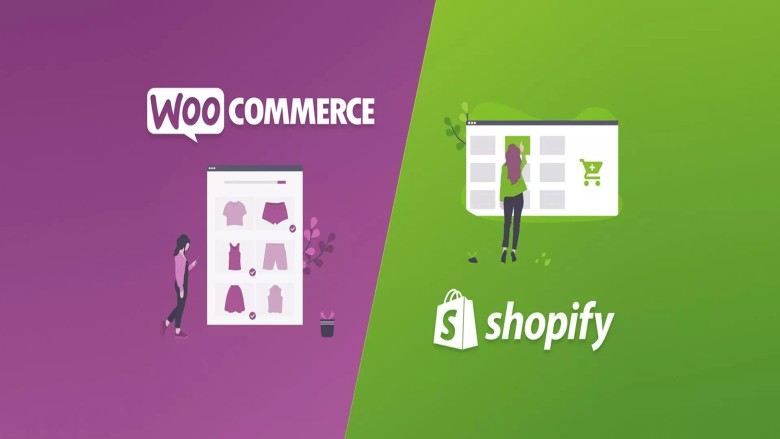
Shopify. WooCommerce. BigCommerce. Magento. The list goes on.
There are hundreds of e-commerce platforms available if you want to start an online store and sell products via your own website.
So how can you choose the best one?
This article takes a 10,000-foot view of today’s major market players, Shopify and WooCommerce, by focusing on the core concepts and decision factors that drive platform choice: pricing, payments, appearance, hosting, products, taxes, shipping, reporting, and even marketing. We will help you understand the features and advantages of each platform, so you can make an informed decision that’s best for your business. Moreover, it will help you evaluate when it might make more sense to customize the one you have or when it’s time to switch platforms.
There’s no such thing as the perfect e-commerce platform.
You always have to listen to your user’s needs to find the right platform for them. Some users don’t know how to ask for what they want. You need to ask them the right questions, so you can deliver the best solution. And some solution providers don’t care how the end-user will use the product.
For example, Jay will always recommend an Apple computer. It doesn’t matter what your needs are or what your budget is; she will always recommend an Apple. While we can appreciate how much she likes that brand, for some people, under some circumstances, it’s not the right choice.
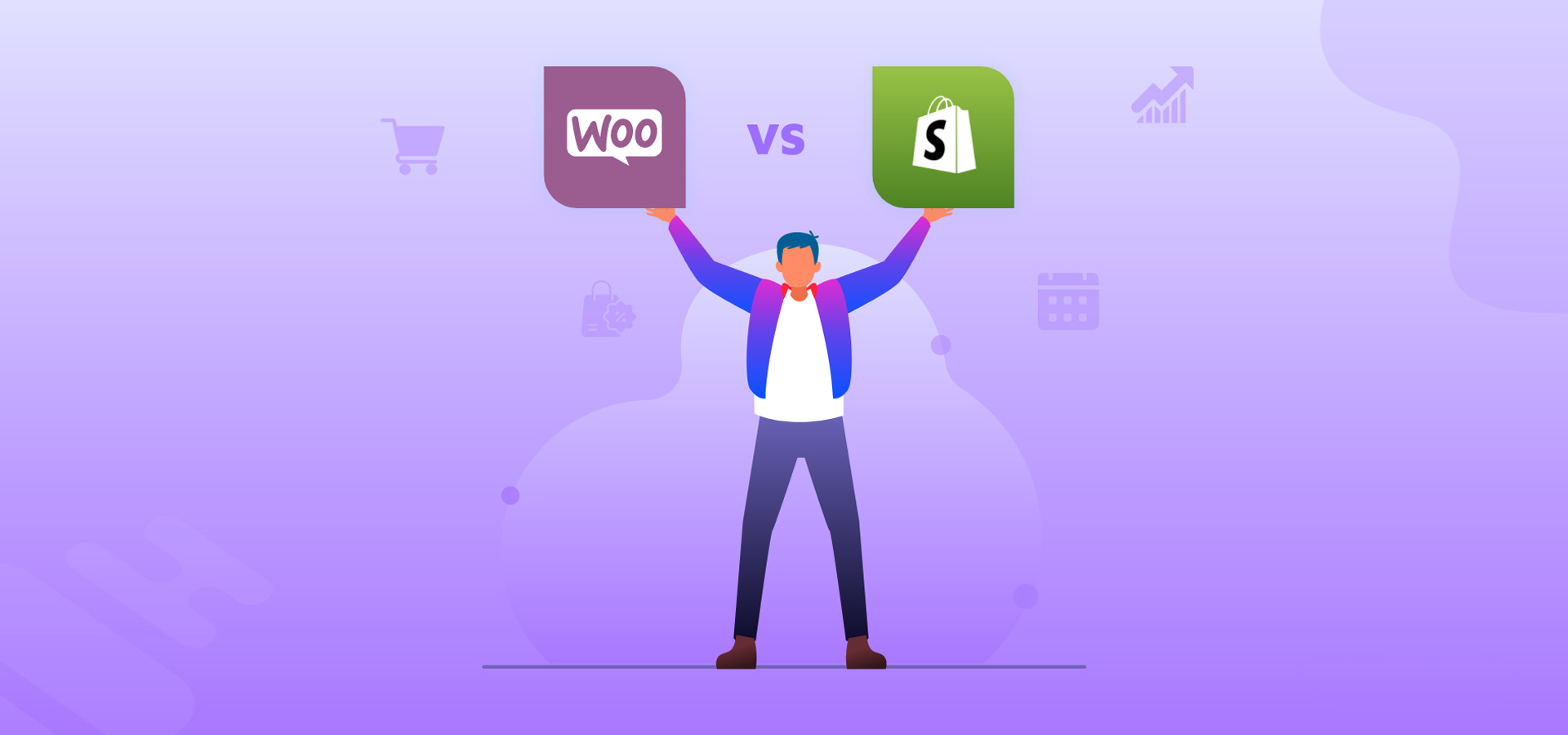
A developer should not be that person who shoehorns every single person into one solution. If you ignore your client’s needs, even if they’re unspoken needs, you’ll likely run into problems when the client can’t use the solution. You don’t want to deliver a test website and then have the client tell you it’s unusable. Or worse, they drag their feet or don’t finish the project and, therefore, do not pay you because it’s not the right solution for them.
It’s a skill to listen to your users and ask the right questions. To ask the right questions and get the right answers, let’s explore how Shopify vs. Woocommerce fares.
If you are a developer building a site for a client or business owner, you will need to consider why you want to take advantage of WooCommerce. WooCommerce has a number of remarkable features.
First, it is developed on the WordPress platform. This means you may use all the tools and services developed on top of WordPress. You have access to hundreds of free WooCommerce plugins and WooCommerce themes. In 2003, WordPress was founded. Typically, a software does not survive the young years because people lose interest in it. However, this did not happen with WordPress. It continues to grow in size, and the space is expanding. No matter what you need, someone has already written a theme, plugin, or custom code to address your problem.

The second selling factor is that, like WordPress, WooCommerce is GPL-licensed and open source. Open source implies that you may examine each and every line of code to see what it does. You are free to delete or modify any line of code. You may rebuild WooCommerce entirely for your own purposes. Because it is open-source, anything can be done with it. The majority of e-commerce systems are hosted, and the source code is concealed; thus, there are some limitations.
The GPL license is quite difficult to understand. The simplest way to explain it is that it is among the most liberal licenses. It allows you to use the program in any way and for an unlimited amount of time without needing to pay. Even if the unexpected were to occur and Automattic, the company behind WooCommerce, went bankrupt, the community could continue to develop and distribute WooCommerce.
The third selling point for WordPress is that it is deeply integrated with content. WordPress began as a blogging platform; therefore, there are tens of thousands of plugins related to blogging, content, and SEO. Numerous e-commerce systems include a blog as an afterthought. It is not the main feature and is somewhat elementary. If you want to engage in content marketing for your online shop, you must have a fully-featured blog and choose a content-focused platform, such as WordPress.
The availability of a vast number of developers is the fourth selling feature. There are tens of thousands of WordPress developers that may be reached if you ever want something completely unique. On Freelancer.com alone, they list one hundred thousand WordPress developers. There is probably a WordPress meeting in your city where you may meet a developer in person.
We’ve mostly discussed WooCommerce and WordPress as platforms so far. WooCommerce offers a multitude of functionalities, which we haven’t even touched on. WooCommerce lets you sell downloadable goods, physical products, digital goods, memberships, subscriptions, preorders, name-your-own-price products, and more with WooCommerce.
It is very customizable. You may sell any goods in whatever manner you like. It also interacts with some of the largest payment gateways available, allowing you to receive payments through Stripe, PayPal, or any of the more than 100 official payment gateways on WooCommerce.com. Additionally, it interfaces with all major shipping suppliers. Live quotes are available from UPS, USPS, and FedEx. These orders may be exported into fulfillment software such as ShipStation and Ordoro. Moreover, labels may be printed at home.
WooCommerce is a solid e-commerce platform for site owners due to its many integrations. And it’s strong for developers due to the platform’s open-source nature and customizability. WooCommerce is an excellent choice for launching a new e-commerce business or re-platforming from an older system.
Shopify is one of the most popular and powerful e-commerce platforms on the Internet.
Shopify is perfect if you want to focus on the things you’re selling and how you’re selling them without having to worry about technology. Shopify is similar to an apartment. When the water main breaks or the roof requires repair, you may call someone, and by the time you return home from work, the issue will have been resolved, and a message will have been left to let you know. When compared to other e-commerce platforms, this might be a rather remarkable experience for business owners. Shopify users resemble more like homeowners. If anything breaks, you must repair it yourself or get a professional.
Shopify’s extensive theme marketplace allows you to choose the ideal theme for your business. They provide a variety of free themes in addition to some premium ones. You may filter by various industries and rank by popularity, price, and date added. Any shop owner may get and install one of these themes without fear of hurting their website.
Shopify’s app store also offers you hundreds of applications. These Shopify apps help you to do tasks as easy as editing picture alt tags, which is beneficial for SEO, or as sophisticated as managing a full customer rewards program.
Shopify prioritizes the usability of its interface and does not provide an excess of possibilities. Shopify permits the use of your own domain, the creation of pages, blog entries, and, of course, items, categories, and tags. They assist you in calculating delivery costs, including the ability to interface with shipping providers such as USPS, UPS, and FedEx, and they assist with payments.
There is the default Shopify Payments gateway, which is ideal for beginners, or you may connect to additional gateways if you have advanced knowledge and a strong preference. Once you begin receiving orders, you will realize how simple it is to organize and fulfill them.
Shopify provides everything you need to start your own online shop, as well as a significant amount of technical maintenance.

As your business grows, you will need additional resources to handle new goals and challenges.
Both Shopify and WooCommerce can both be scaled to accommodate large amounts of traffic and orders, but they’re not identical.
Shopify manages the technical aspects of your store, which means you don’t ever have to worry about scalability, performance, and security. Once your business begins to grow, you can upgrade your Shopify plan easily.
Without having to worry about downtimes, backups, upgrades, or security, their infrastructure can easily support your expanding company. In addition, enterprise services are available as part of the Shopify Plus package.
This eliminates the uncomfortable aspect of growing, but it increases your company’s costs. Your costs may increase, so you must plan accordingly.
The good news is that you will not have to recruit or maintain an in-house technical staff, which will balance your expenses.
As WooCommerce is a self-hosted platform, you are responsible for managing website updates, backups, and security.
When your store’s traffic increases, your basic WooCommerce hosting plan’s resources will become inadequate.
Since you have complete control over your WordPress website, you have a variety of growth management choices.
Your WooCommerce hosting fees will rise, but you will have more discretion over which resources you upgrade, allowing you to avoid overspending on unnecessary resources.
You can even employ a managed WordPress hosting provider, such as SiteGround or WP Engine, to assist with scaling your WooCommerce shop.
Despite the power offered by WooCommerce, some small companies choose a hassle-free alternative.
Both WooCommerce and Shopify are aimed at offering a user-friendly eCommerce platform. As a result, both are simple to operate. However, the issue here is ‘Which platform is most convenient?’ Given that these two systems are fundamentally different, it’s no surprise that the methods they use to build websites are different.
To begin, WooCommerce is an e-commerce platform that must be set up. For this reason, you must first locate your own web server, download and install the WordPress operating system, and then add the WooCommerce extension.
To install the plugin, go to the WordPress dashboard, click on ‘Plugins,’ and then click ‘Add New.’ You’ll be sent to the on-screen setup process as soon as WooCommerce is successfully installed and enabled. It takes you step-by-step through the plugin’s most important features in five easy stages.
The fifth step is ‘Ready,’ where you’ll find a button, ‘Create your first product,’ which will lead you to the page shown in the picture below. It contains page setup, shop location, shipping and tax choices, and payment options.
If you’re looking for an easy-to-use, subscription-based eCommerce platform, Shopify is a better option than WooCommerce. The Shopify platform comes with hosting and an e-commerce design that is easy to use and allows you to simply add items.
Start a Shopify shop by visiting Shopify.com and selecting a plan from the options. However, you may always begin with a 14-day free trial and afterward upgrade to any of the plans at any time.
Shopify will walk you through the setup process when you provide your email address, password, and the name of your shop. After a few seconds, you’ll be asked to provide some information about yourself and your business. And that’s how you obtain immediate access to the dashboard, as seen in the picture below.
It’s easy to notice in the picture that all of the relevant pieces and alternatives have been positioned in a logical order. Management of stores, products, customers, and reports are all at the fingertips of the user. To see how your first Shopify shop appears, you may start adding goods right away. Just a few more steps, and you’ll be ready to go.
With Shopify, you may avoid the hassles of locating hosting and installing software, for example. If you’re not familiar with hosting, software installation, or content management systems (CMS), this is a good alternative for you. Once hosting and installation are complete, WooCommerce is just as easy to configure and build a full eCommerce shop same as Shopify.
Finally, customer service is one of the crucial aspects when deciding on an eCommerce platform. If you are a beginner, customer service is particularly important since you may require assistance setting-up, developing, or modifying your shop at any moment.
Open-source software means that WooCommerce’s customer support forum is the first place to go for answers. After that, you may submit a support ticket to seek assistance. You may ask questions at WooCommerce.com using your WordPress.com account.
WooCommerce docs also provide a wealth of documentation, reference resources, and tutorials. In addition, the creators of the present theme may provide assistance with customization.
In comparison to WooCommerce, which is technically free software, Shopify’s customer support is more convincing as Shopify is a paid platform. Live chat, email, and phone assistance are available to consumers around the clock, seven days a week. 4 minutes for a chat and 18 hours for email and a phone call are the typical wait times. Shopify provides a wealth of documentation for its customers as well. You just need to key in your search term in the search documentation box, and all the relevant results will be shown.
For the most part, Shopify offers more personalized customer support than its competitors. WooCommerce too offers a lot of support, but it’s not as good as Shopify in terms of providing immediate assistance to customers.
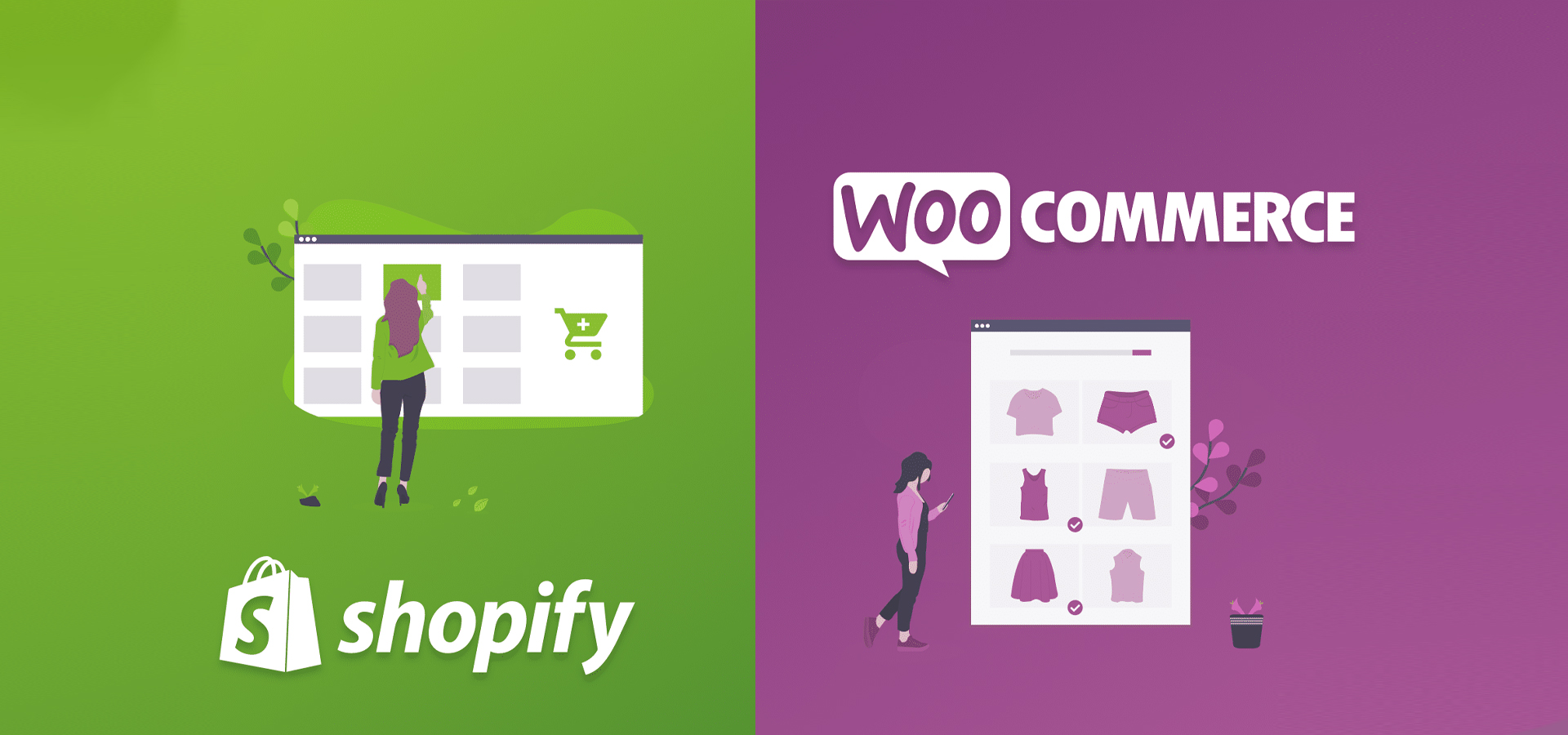
With WooCommerce, all you need to buy is hosting service and domain as it is free to open-source software.
Bluehost offers WordPress hosting for as cheap as $2.95 per month, while other hosting firms offer basic hosting plans for between $3 and $9. It is helpful that some WordPress hosting providers include a free domain with their hosting services. Bluehost, DreamHost, and GreenGeeks all provide a free domain name with the purchase of a hosting plan.
Because Shopify Store is a subscription-based business, it offers fewer hosting plan alternatives than WooCommerce. You must subscribe to one of the three accessible Shopify plans.
Basic Shopify costs $29 per month, Shopify costs $79 per month, and Advanced Shopify costs $299 per month. The Basic plan is appropriate for small startups and new companies, while the Shopify plan is for developing medium-sized firms, and the Advanced plan is for big enterprises. These plans are essentially WooCommerce hosting options.
When you sign up for any of the Shopify plans, you’ll get a free Shopify subdomain (such as mystore.shopify.com). However, if you have a serious business, a Shopify domain may not be the best option. To get a custom domain (mystore.com), you must pay an additional $13 per year at the Shopify domain shop. This is what a basic Shopify shop costs. In addition, you may want more features and customization possibilities, which may be more expensive. The following are other options you may want to consider:
Paid theme from the Shopify theme shop or a paid bespoke Shopify theme from a third-party theme provider: $140 to $180 per theme at the Shopify Store / $49 to $99 at ThemeForest.
Shopify Apps: $34.99 per month for Smart Upsells and $20 per month for SEO Manager.
In addition to the three standard Shopify plans, there are two more options called Shopify Plus and Shopify Lite. Shopify Lite is the most affordable plan at $9 per month. It allows you to sell on Facebook, Messenger, and any other website or blog.
In essence, WooCommerce is an inexpensive platform well-suited for startups and small companies. Shopify first seems to be more expensive by a few bucks, but the simplicity of use and the number of free applications available in the app store make the price worthwhile.
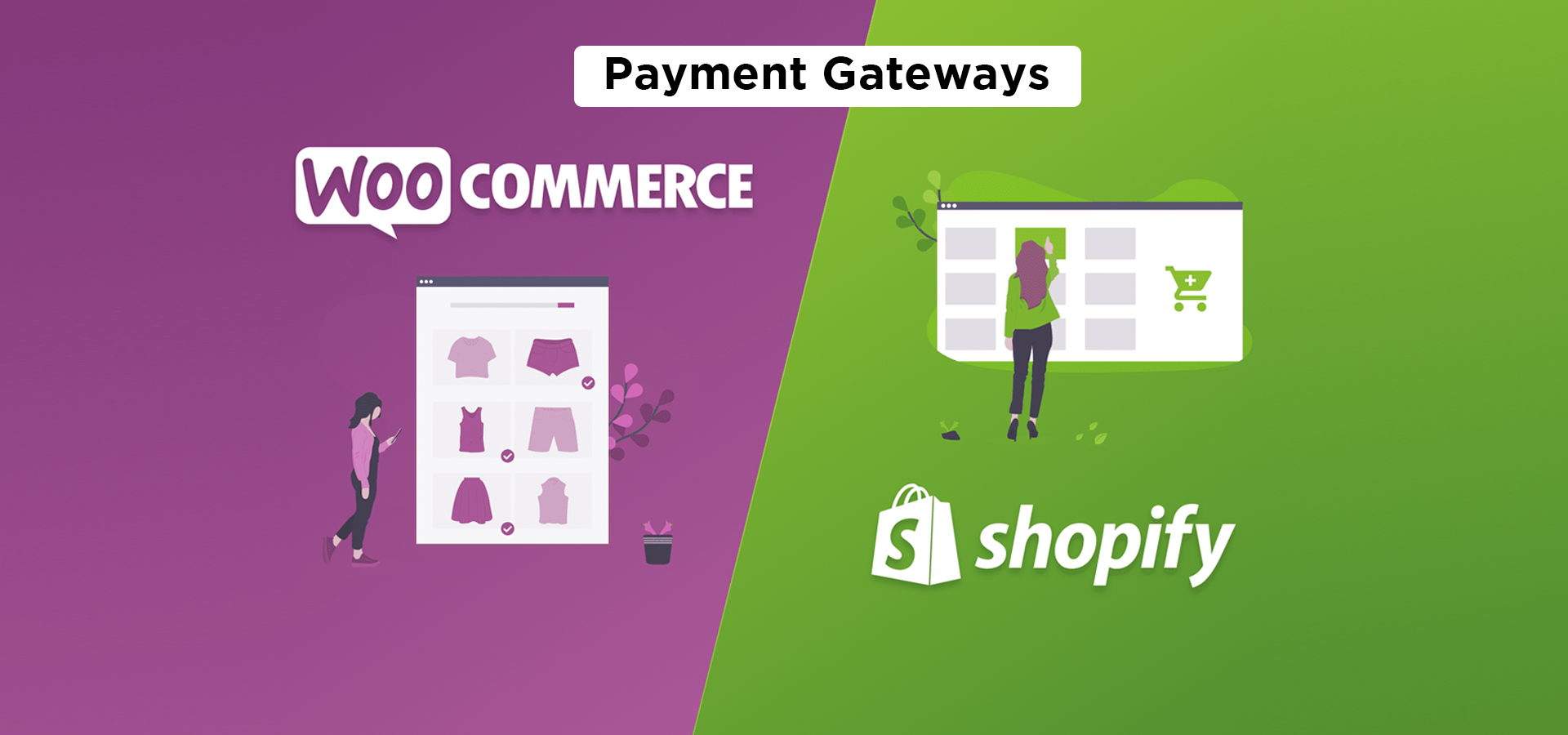
Shopify provides native Shopify Payments powered by Stripe as well as third-party payment gateways like PayPal and Amazon Payments. Note that Shopify Payments is currently only accessible in the United States, Canada, the United Kingdom, and Australia.
For other countries, you must use a (perhaps paid) third-party payment gateway.
WooCommerce supports various payment gateway integration extensions: PayPal and Stripe are free, whereas Authorize.net, Amazon Payments, and Braintree cost approximately $100 each year. Stripe and PayPal are excellent options for launching an online business.
If you offer physical goods, you must provide a streamlined shipping experience. Both Shopify and WooCommerce allow worldwide shipping. Shopify has an advantage, though, because of its built-in relationships with Canada Post, FedEx, UPS, DHL, and USPS.
You may also utilize both platforms for dropshipping, a retail model in which no inventory is kept. Instead, you buy products from merchants and ship them straight to your consumers.
Building a dropshipping company will result in a website that resembles any other online shop. However, both eCommerce systems offer additional features that might boost your dropshipping enterprise.
There are specialized programs for the most major markets, including Aliexpress, if you use Shopify.
In a similar manner, the WooCommerce community has developed a variety of plugins that allow you to import items straight from third-party marketplaces. They consist of the AliDropship plugin, which is compatible with AliExpress. It can also automate order fulfillment with a single click.
If you want to launch a dropshipping business, WooCommerce and Shopify are excellent possibilities. Be mindful that many of these product marketplaces charge membership fees, shipping charges, and other fees.
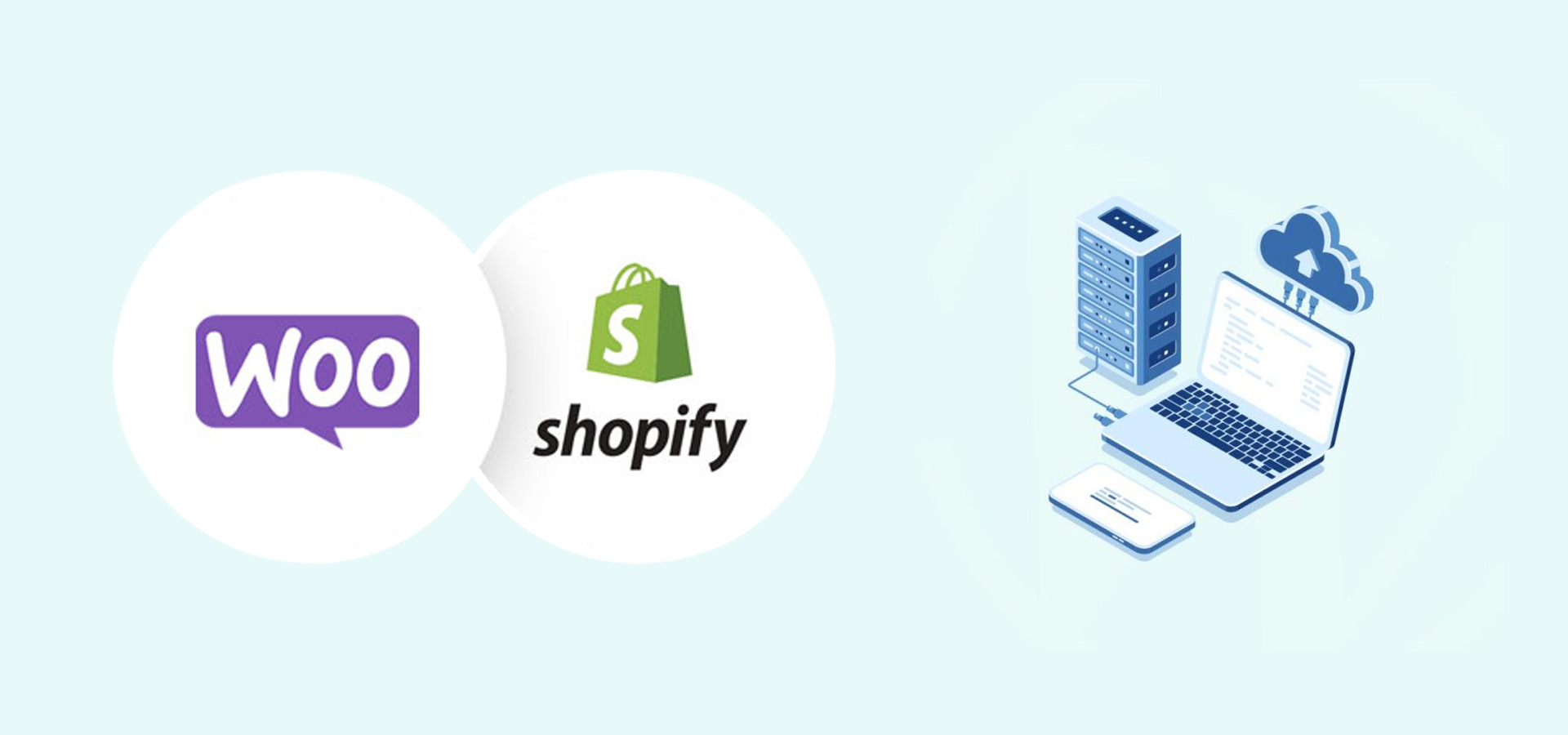
WooCommerce and Shopify are significantly different in the way in which online stores are created. WooCommerce is a piece of software that requires you to host it, but Shopify is an eCommerce platform that includes hosting for your shop. WooCommerce is a self-hosted platform, but Shopify is a fully hosted platform.
The two platforms provide you with the features expected from any leading eCommerce platform:
To expand the native capabilities even further, you may use extensions and add-ons that seamlessly integrate with the platform. WooCommerce store has a multitude of extensions, but Shopify’s App Store has about 500 apps.
